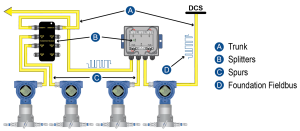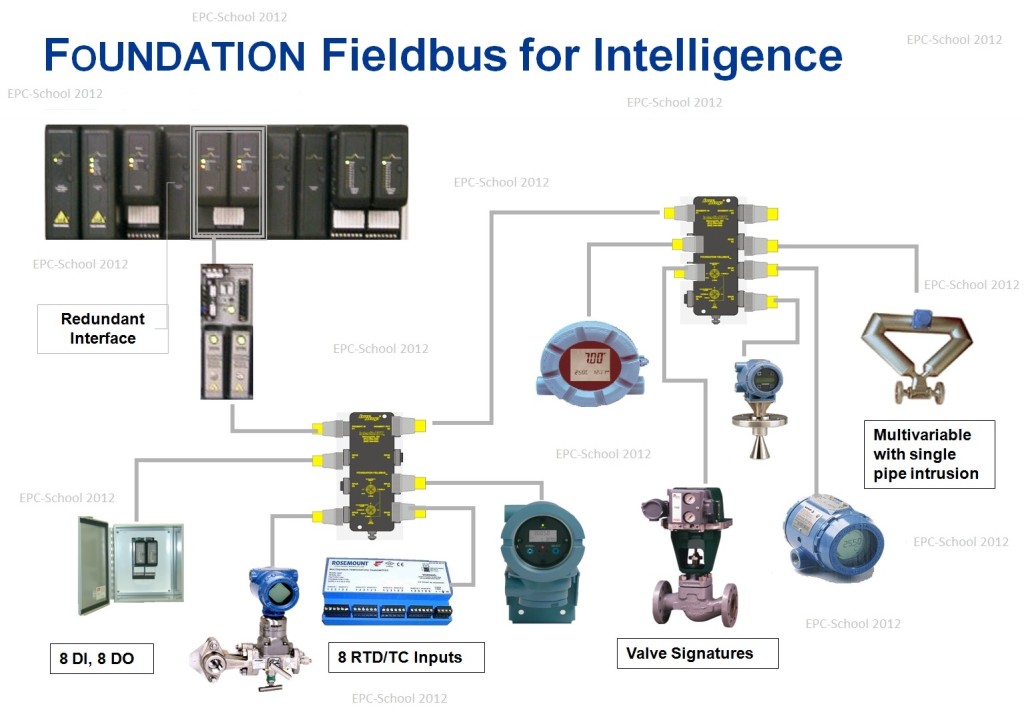Before the introduction of Foundation Fieldbus, the gateway to the industrial automation started with parallel wiring, where the devices were connected independently with the rule and control level.
However, with the increased levels of automation, the number of participants also increased. This led to a high wiring expenditure. Hence, it was extensively replaced by economical and faster Fieldbus systems.
Foundation Fieldbus systems are targeted for  platforms using advanced as well as primary regulatory control, along with some of the discrete commands associated with those functions. The technology was previously used in the process industries; however, with recent advancements, Foundation Fieldbus are now being applied in power plants as well.
platforms using advanced as well as primary regulatory control, along with some of the discrete commands associated with those functions. The technology was previously used in the process industries; however, with recent advancements, Foundation Fieldbus are now being applied in power plants as well.
Definition of Fieldbus
Field and Bus make Fieldbus. A field is a geographically limited area. In an engineering world, it is intellection of the plant levels. Bus, on the other hand, is a set of a standard line that electrically links multiple circuits for transferring information.
The idea behind Fieldbus is to eliminate any point-to-point links between the field devices like actuators and sensors and their controllers by a single digital connection on which all the information is communicated consecutively in serial order and multiplexed over time.
In most cases, the Fieldbus transfers the information in small packets in a sequential manner. The subsequent transmission of information decreases the total required number of connecting lines over greater distances than that of parallel transfers.
Examples of Fieldbuses
- Interbus– it has a transmission rate of up to 2 Mbps, which is characterized by high transmission security and constant, but short cycle time.
- Profibus– it is used in manufacturing automation and engineering industries. It has a transmission rate between 9.6 kbps and 500 kbps. It uses a hierarchical structure with the actuators and sensors levels.
Within the process automation environment, there are two related applications of Foundation Fieldbus. They use different communication speeds and physical media.
- The H1 segment operates at 31.25 kbit/s. H1 segments are usually used for connecting host systems and field devices. As compared to standard twisted-pair wiring, H1 segment offers more power and communication in both intrinsic and conventional safety applications. It is the most popular Foundation Fieldbus application.
- High-Speed Ethernet (HSE) operates at 100/1000 Mbit/s and is used for connecting gateways, host systems, subsystems, and linking devices. However, HSE doesn’t provide power over the cable, for now.
Benefits of Foundation Fieldbus
- Multidrop wiring
- Multivariable instruments
- New types of information
- Two-way communication
- Control in the field
- Interchangeability- devices can be functionally interchanged without changing the functionality
- Interoperability- devices can communicate with each other while performing in multi-vendor environments with ease

What does this mean?
Considering the mentioned benefits of Foundation Fieldbus, there are plenty of reasons why it is implemented in many automation industries. So of them are as follows:
- Speed – Systems can be installed and organized more quickly
- Reliability – Short signal paths mean increased availability and reliability
- Interference reliability – Increased protection against interference
- Uniformity – The use of unified connection technology and standardized bus protocols enable the use of different devices from different manufacturers
- Flexibility – Modifications and expansions can be implemented quickly with ease
Image sources-
https://www.automation.com/automation-news/article/how-to-pick-the-right-fieldbus-protocol
http://epc-school.blogspot.com/2012/07/foundation-fieldbus-concepts-3.html
